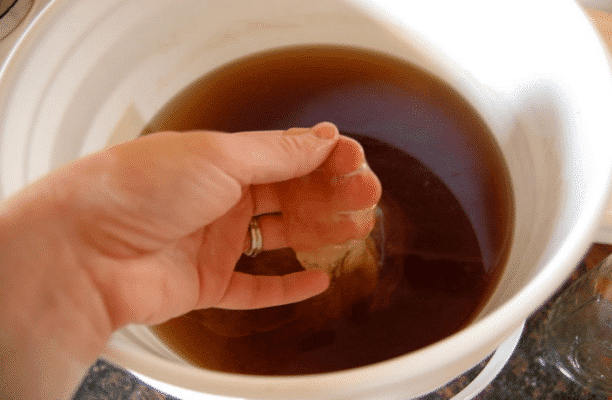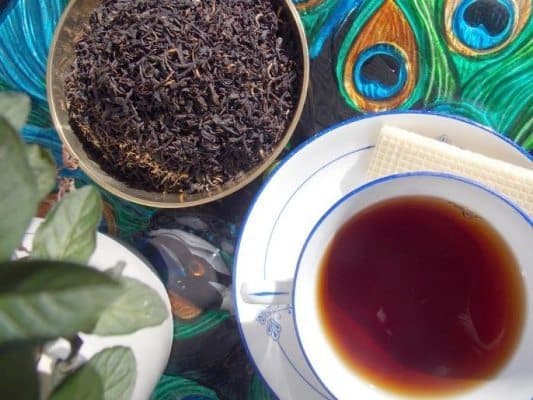How To Grow A New SCOBY From An Old One
Part of the magic of kombucha is that it’s a process of continual renewal. When you put a healthy SCOBY (the Symbiotic Colony Of Bacteria and Yeast that actually performs the magic) into a jar of sweetened tea, the microorganisms transform the sugars into probiotics like lactic acid and gluconic acid. At the same time, the SCOBY microorganisms are growing, dividing, and reproducing themselves. That’s why each time you make a batch of kombucha, your “mother” SCOBY will get a little thicker.
Not only that, but the “mother” will create a “baby” SCOBY; some of the newly-born microorganisms will float through the liquid to the top of the container and form a new colony. If your “mother” SCOBY is already floating on top of the liquid, you might not notice the “baby.” It will seem like just another layer of the first SCOBY. Because of this layering and growth process, it’s easy to divide a SCOBY, and if you have a healthy SCOBY to start with, the new SCOBYs you make by division will all be healthy, too.
Basic Recipe for Growing a SCOBY
If you have the correct balance of nutrients, the SCOBY will thrive. The healthiest SCOBYs form when you’re using the right type of tea for making kombucha and you’ve brewed the tea using filtered or distilled water to eliminate any contamination from things like chlorine (found in many municipal water supplies) or harmful bacteria (found in some well or spring water). A SCOBY feeds on sucrose (glucose + fructose, two common types of sugar) and likes sugars that are easy to break down and digest. “Clean” sugar is the easiest from the SCOBY’s perspective – that’s sugar which has been refined so that there are no extra minerals or other substances that get between the microorganisms and the basic sucrose molecules. The best sugar for kombucha brewing is organic white cane sugar, which is refined enough for the SCOBY but still has many of the natural nutrients from the sugarcane that will benefit your health.
Your SCOBY will grow best when you’re brewing unflavored black or green tea in filtered water, and sweetening the tea with organic cane sugar. With this nutrient mix, the SCOBY will develop quickly, and should be healthy and thick in a shorter period of time. You can use your normal basic recipe for making kombucha that gives you enough kombucha to drink as well as to start a new batch, or you can make a small amount that just gives you a new SCOBY and some starter for your next batch, like this:
- Bring 2 cups filtered water to a boil. Turn off the heat.
- Add 1 teaspoon loose leaf or 1 bag unflavored black tea.
- Steep the tea for 15 minutes. Remove the tea bag/leaves.
- Add in 1/4 cup organic white cane sugar and stir until dissolved.
- Cool the liquid to room temperature (75F).
- Add 2 tablespoons distilled white vinegar (unflavored) or 1 cup kombucha tea.
- Pour liquid into a quart-sized glass jar or bowl.
- Put your SCOBY on top of the liquid.
- Cover the jar or bowl tightly with a clean cloth.
- Put the jar in a warm place (70-80F) that is out of direct sunlight.
NOTE: You can buy a SCOBY through online retailers or get one from another kombucha brewer.
Give it Time
It will take between 7 and 30 days for your “mother” SCOBY to create a “baby” so don’t be impatient. To avoid problems, be sure that the jar is at a constant temperature, and that you don’t move the jar or disturb the liquid. A low temperature will slow down the growth, but when it’s too warm the yeast/bacteria ratio may get unbalanced. Jiggling the jar will affect the even development of the baby SCOBY that is forming on the surface of the liquid.
Thicker is Better
Your baby SCOBY will be thin, and possibly even transparent. The thicker it is, the better it will be at making a new batch of kombucha tea, so wait until the new SCOBY is at least 1/8 inch thick (about the height of two quarters stacked on top of each other) before using it to brew tea.
While you’re waiting for your baby SCOBY to get thicker, you can use the “mother” SCOBY and the baby together to brew your kombucha tea. Each new baby SCOBY will become another layer, and you can separate the layers of the SCOBY when they’re thick enough
You can also put your baby SCOBY in a SCOBY hotel where it will continue to grow. Use the “mother” SCOBY to make your kombucha tea while you’re waiting for the baby to grow up.
Keeping the SCOBYs Separated
The baby SCOBY will float to the top, and if the mother SCOBY is already floating there, the two will start to grow together. If you want to keep them entirely separate, you can put a small clean glass bowl (a shallow one) or plate on top of the mother SCOBY to weight it down a little and keep it below the surface of the liquid.
Improving SCOBY Health
If you’re using a newly-purchased SCOBY then the colony should have the right proportion of yeast and bacteria. However, as SCOBYs age, they sometimes get out of balance. Usually the percentage of yeasts in the colony gets too large, often because of a too-warm environment. If you notice that the finished kombucha tea has a “yeasty” flavor, you can discard that SCOBY and use one of the ones you’ve been storing in your SCOBY hotel. However, if you don’t have any backup SCOBYs, or they all have this problem, you can grow a new SCOBY with a better balance. Try one or all of these tips when you follow the basic recipe above:
- Increase the amount of distilled vinegar from 2 tablespoons to 4 tablespoons.
- If you’re using kombucha tea as a starter, don’t use the tea from the bottom of the jar or bottle.
- Use green tea instead of black tea.
- Steep the tea for 5 minutes instead of 15.
- Keep the temperature at or below 70F.






